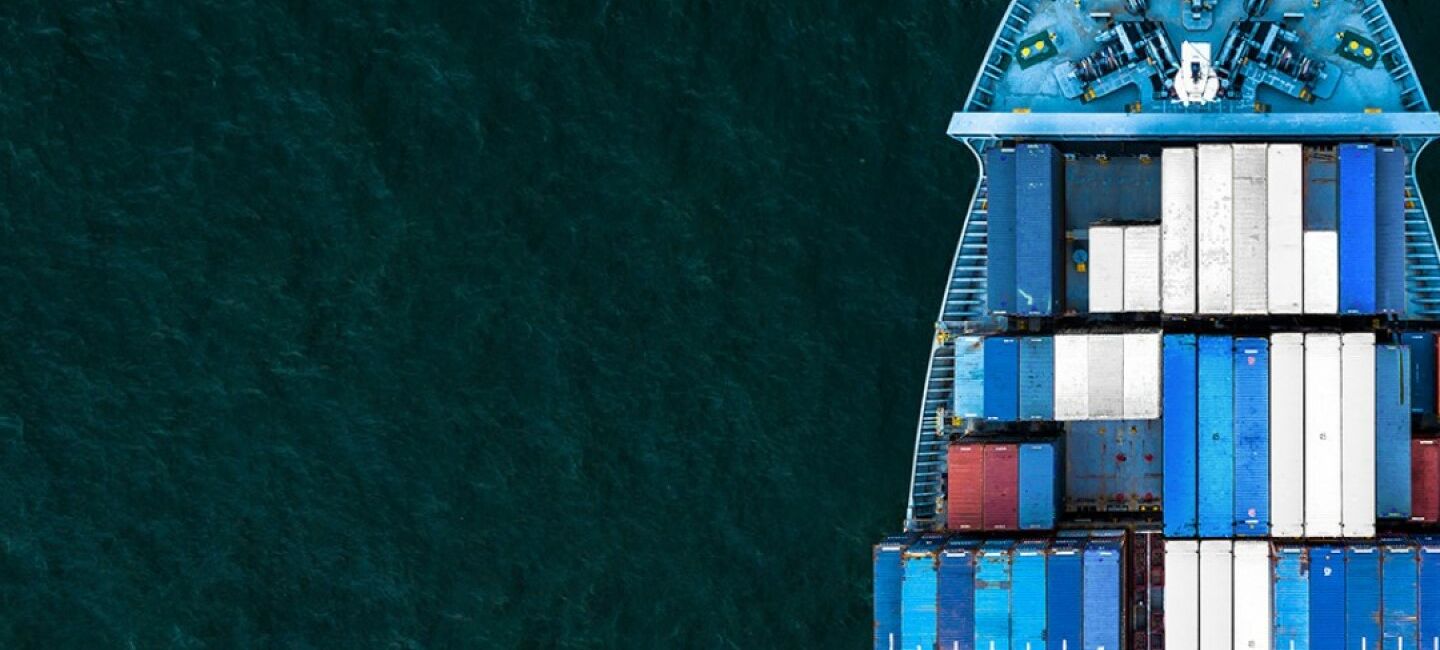A blog by Tom Mellor, Head of OEM Technical Support and Digital Standards at the UK Hydrographic Office
15 November 2021
After a challenging two years and countless virtual meetings, London International Shipping Week in September this year was an exceptional opportunity to come together as an industry, see many familiar faces in person again and discuss the challenges that lie ahead for our sector.
It was a pleasure to contribute to the event through our seminar ‘Navigating the changing maritime landscape’. During this presentation, we explored how the next generation of navigational technologies and marine data solutions based on the new IHO S-100 data standard will help shipping to meet the era-defining challenges of digitalisation and decarbonisation. We also illustrated what the coming years will look like for the UK Hydrographic Office (UKHO).
During the first part of the seminar, we discussed with delegates how the next generation of navigational technologies will change the way we process and share data. For anyone unable to join us, I hope this blog provides a useful summary of the discussion, as well as answering a few questions from the audience we were not able to answer on the day.
At the UKHO we champion the International Hydrographic Organization’s new S-100 data standards for marine data. This new universal hydrographic data standard will enrich the next generation of data products for commercial shipping, geographic information system communities and ocean science by enhancing the way data is created, shared, and used.
From a navigational perspective, S-100 enables the production of numerous different digital data sets that can be used as overlays in S-100 ECDIS. Integrated together in a harmonised display they will be available to bridge teams to enhance all stages of the passage planning and monitoring phases of a voyage. In the future, it is envisaged that multiple S-100 digital layers will eventually take the place of the physical nautical publication.
A significant S-100 navigational product specification at a high level of maturity is S-102 Bathymetric Surface. These high-resolution bathymetry data sets are of critical importance for the conduct of vessels in depth constrained or confined water ways. Enhanced bathymetric content reveals significantly increased safety margins for vessels over traditional ENCs. In addition to the obvious safety benefits there is a significant commercial relevance, as increased resolution in the data can allow for loading more cargo, accurate port call times and berth to berth planning the like of which has never been possible before. S-102 is part of a bigger picture, as one of the core navigational data sets it can be combined in S-100 ECDIS along with S-101 Electronic Navigational Charts (ENCs) and S-104 Water Level data sets to provide mariners with a substantially improved operational overview of the physical environment by dynamically adjusting the vessels safety contour.
The interoperability of S-100 data sets and the future possibilities of unlocking this data raises the obvious questions regarding how ECDIS will be reshaped by S-100. Crucially, S-100 ECDIS can be updated with machine readable catalogues. This allows S-100 ECDIS to display new data products without the need for costly software upgrades and could be operational towards the end of the decade, when we could see, for the first time, new systems on the market that will incorporate many additional operational efficiencies.
UKHO is engaged in a number of S-100 trial projects to help us better understand the production processes and to start building end-to-end service propositions with ECDIS OEMs and hardware developers.
UKHO and Shom, the French Naval Hydrographic and Oceanographic Service, are collaborating on an S-101 ENC project to create data sets in both S-57 and S-101 format to be used in live sea trials of an S-100 ECDIS. It is hoped the results of the trial will reveal there is no impact on the safety of navigation with the simultaneous display of the two data formats and that the results of the trial can be used to support the S-100 safety case to IMO.
With the introduction of any new hardware, product or service that will require changes to onboard vessel policies and procedures there will be a required period of familiarisation training to ensure safe use. This will certainly apply to the new S-100 ECDIS which will have extended functionality over existing systems. Being proficient in the use of a new S-100 ECDIS will lead to improved safety and the greatest operational efficiencies being afforded to vessels and shipping companies. It is important to stress during the phased introduction of new S-101 ENCs much of the symbology will remain identical to that used on current ENCs, to support a safe transition and alleviate the training requirements.
As highlighted in the Marine Accident Investigation Branch and the Danish Marine Accident Investigation Board’s collaborative study on ECDIS, maritime training schools are still today using paper charts as the medium to teach the basic navigational practices. This is a situation that needs to change, now, if we are to have competent mariners capable of not only using current ECDIS correctly, but in future when using S-100 ECDIS feel empowered to use all the new features to maximise its effectiveness.
A common user complaint of exiting ECDIS systems has been the variability of system design leading to difficulties in finding core navigational functions. This issue has now been addressed with the publication of IMO guidelines for the standardisation of user interface design for navigational equipment – previously known by most as ‘S-Mode’.
The guidelines will introduce a generic set of icons that control the various navigational tasks, which have been developed in direct response to user feedback.
The IMO Maritime Safety Committee adopted amendments to the performance standards for the presentation of navigation-related information on shipborne navigational displays, with an implementation date for all new hardware of the 1st January 2024 for shipborne navigational displays on the bridge of a ship (for radar equipment, ECDIS and Integrated Navigational Systems). The implementation date for all other navigational displays on the bridge of a ship is 1st July 2025.
There is obvious widespread interest in the industry to identify and harness the potential opportunities that S-100 presents to support shipping’s green agenda and understand how the new standards will help in the path to decarbonisation. The reality is that these standards will help underpin the next generation of navigation technology supporting route optimisation and Just In Time (JIT) arrival and sustainable ocean management.
S-100 will also support data modelling of sea levels to support the protection and improvement of coastal communities. As a result, there are huge environmental benefits to be gained on top of the economic, commercial, and safety advantages that S-100 will bring.
Finally, it is important to note how we will be defending the next generation of navigation technologies from the added risks – especially those related to cyber security - posed by the increasing volumes of data being transferred between ship and shore. S-100 provides added protection methods over existing standards to prevent unauthorised access to data sets and the International Electrotechnical Commission (IEC) are also developing a new Secure Communication Standard, or SECOM, with the goal of providing a standardised communication infrastructure between shore and ship for the transfer of files related to the IMO e-Navigation concept. It’s crucial that cyber security measures continue to evolve to mitigate the ever present and growing threat of cyber-attack.



